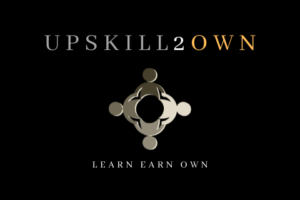Have you ever wondered how successful business owners stay strong in the face of constant challenges? The journey from employee to entrepreneur is filled with ups and downs. It takes more than just business skills to thrive.

Building mental resilience is key for business owners to navigate obstacles and achieve long-term success. Mental toughness helps entrepreneurs make tough decisions, bounce back from setbacks, and keep pushing forward. It’s not just about being tough – it’s about developing the right mindset and skills.
Business owners can build mental strength in many ways. They can learn to see problems as chances to grow. They can work on managing their emotions better. Setting clear goals helps too. With practice, entrepreneurs can become more resilient and ready to face whatever comes their way.
Key Takeaways
- Mental resilience helps business owners overcome challenges and achieve success
- Viewing setbacks as opportunities for growth strengthens an entrepreneurial mindset
- Regular self-care and emotional management practices boost mental toughness
Cultivating a Growth Mindset

A growth mindset helps entrepreneurs build resilience and tackle challenges head-on. It allows business owners to see setbacks as chances to learn and improve.
Embracing Challenges and Setbacks
Entrepreneurs with a growth mindset view challenges as chances to gain new skills. They don’t shy away from hard tasks. Instead, they actively seek out opportunities to grow.
When faced with setbacks, these business owners ask:
- What can I learn from this?
- How can I use this to improve?
- What new approach can I try next?
This outlook helps them bounce back faster from failures. It also makes them more willing to take calculated risks.
Establishing Realistic Goals
Setting achievable goals is key for building mental resilience. Entrepreneurs should break big aims into smaller, measurable steps.
Some tips for setting realistic goals:
• Make them specific and time-bound
• Write them down and review often
• Adjust as needed based on progress
Realistic goals help maintain focus and mental clarity. They give a sense of progress, even during tough times. This boosts confidence and motivation.
Regular goal review also lets business owners spot areas for growth. They can then seek out new learning to fill those gaps.
Developing Resilience and Emotional Regulation

Resilience and emotional regulation are key skills for managing stress and challenges. These abilities help people bounce back from setbacks and control their reactions to difficult situations.
Harnessing the Power of Self-Care and Mindfulness
Self-care is vital for building resilience. It includes getting enough sleep, eating well, and exercising regularly. These habits help the body and mind cope with stress.
Mindfulness is another powerful tool. It involves paying attention to the present moment without judgment. Mindfulness meditation can improve emotional regulation and reduce anxiety.
Stress management techniques are also important. Deep breathing, progressive muscle relaxation, and guided imagery can help calm the nervous system.
Resilience training programs teach specific coping strategies. These may include:
- Identifying and challenging negative thoughts
- Setting realistic goals
- Practicing gratitude
- Developing problem-solving skills
Building and Leveraging a Support Network
Strong social connections are crucial for resilience. A support network provides emotional backing during tough times.
For business owners, identifying key supporters is a strategic move. This network might include mentors, peers, and trusted friends or family members.
Collaboration with others can boost resilience. Sharing experiences and solutions helps people feel less alone in their struggles.
Employers can support resilience by offering training programs. These might focus on stress management, problem-solving, and emotional regulation.
Creating a culture of openness about mental health is important. This encourages people to seek help when needed.
Strategies for Sustainable Business Growth

Building mental resilience is key for sustainable business growth. Strong leaders use specific strategies to foster innovation, manage risks, and maintain their health.
Innovation and Risk Mitigation
Business owners need to embrace innovation to stay competitive. They can set up idea sharing sessions with employees to spark creativity. Leaders should also create a culture that welcomes new approaches.
Risk mitigation is crucial for long-term success. Smart owners diversify their products or services. They also build emergency funds to weather tough times.
Regular market research helps spot trends and threats early. Owners can use this data to adjust their strategies quickly.
Building strong partnerships with suppliers and customers adds stability. These relationships provide support during challenging periods.
Maintaining Physical Health and Preventing Burnout
Physical health directly impacts business performance. Owners should prioritize regular exercise, even if it’s just a daily walk. Eating balanced meals fuels the body and mind for peak productivity.
Getting enough sleep is vital. Lack of rest leads to poor decisions. Set a consistent sleep schedule and stick to it.
To prevent burnout, schedule regular breaks throughout the day. Use this time to step away from work completely. Short breaks can boost focus and creativity.
Downtime is not a luxury, it’s a necessity. Plan vacations and stick to them. Disconnecting allows for rest and fresh perspectives.
Delegate tasks to trusted team members. This frees up time and reduces stress. It also helps develop employee skills and confidence.
Optimizing Performance and Productivity
Mental resilience plays a key role in boosting workplace productivity and decision-making. It helps people stay focused and perform well under pressure.
Advancing Decision-Making and Clarity
Strong mental resilience leads to better choices at work. It helps people think clearly when facing tough problems. Resilient workers can see issues from different angles. This lets them find creative solutions faster.
Improved clarity also comes with mental resilience. People can sort through complex information more easily. They don’t get overwhelmed by data overload. Instead, they can pick out what’s most important.
Some ways to build decision-making skills:
- Practice mindfulness to stay present
- Take short breaks to reset the mind
- Learn stress management techniques
Cultivating Mental Strength and Toughness
Mental toughness helps people push through challenges. It gives them the grit to keep going when things get hard. Tough-minded workers bounce back quickly from setbacks.
Building mental strength takes practice. People can start small and work up to bigger challenges. Over time, this creates a more resilient mindset.
Key ways to grow mental toughness:
- Set stretch goals and work towards them
- Face fears in small doses
- Learn from failures instead of dwelling on them
- Practice positive self-talk
Managers can help by giving feedback and support. Creating a culture that values growth mindsets also boosts mental strength.
Frequently Asked Questions
Building mental resilience is crucial for those transitioning from employee to business owner. The following questions address key aspects of developing a resilient mindset and creating a resilient work environment.
What steps can an individual take to transition from employee to entrepreneur with a resilient mindset?
To transition from employee to entrepreneur with a resilient mindset, individuals can start by setting clear goals and developing a growth mindset. They should embrace challenges as learning opportunities and practice self-reflection.
Developing a strong support network of mentors and peers can provide guidance and encouragement during difficult times. Regular self-care and stress management techniques are also essential for maintaining resilience.
How can business owners cultivate the 7 C’s of resilience within their organizations?
Business owners can cultivate the 7 C’s of resilience by focusing on competence, confidence, connection, character, contribution, coping, and control. They can implement training programs to enhance employees’ skills and boost confidence.
Fostering a sense of community and encouraging teamwork builds connection. Promoting ethical behavior and social responsibility develops character and contribution. Teaching effective coping strategies and empowering employees with decision-making abilities enhances coping and control.
What strategies can help in maintaining emotional resilience during the early stages of a business?
Maintaining emotional resilience in the early stages of a business involves practicing mindfulness and stress reduction techniques. Entrepreneurs should establish a routine that includes regular exercise and adequate sleep.
Setting realistic expectations and celebrating small wins can boost morale. Seeking support from fellow entrepreneurs or joining a business network can provide valuable emotional support and practical advice.
What are effective ways to foster a workplace environment that enhances mental resilience?
To foster a workplace environment that enhances mental resilience, leaders can promote open communication and create a culture of psychological safety. Encouraging work-life balance and offering flexible work arrangements can reduce stress.
Providing access to mental health resources and regularly checking in with employees demonstrates support. Recognizing and rewarding resilient behaviors can reinforce their importance within the organization.
How do the 5 R’s of resilience apply to entrepreneurship and business management?
The 5 R’s of resilience – Resourcefulness, Remembering, Resistance, Recovery, and Reconfiguration – apply to entrepreneurship and business management in various ways. Resourcefulness involves finding creative solutions to challenges.
Remembering past successes builds confidence. Resistance helps in maintaining focus during adversity. Recovery involves bouncing back from setbacks. Reconfiguration allows for adapting strategies based on changing circumstances.
In what ways can business leaders implement the 3 P’s to bolster their own and their employees’ emotional resilience?
Business leaders can implement the 3 P’s – Personalization, Pervasiveness, and Permanence – to bolster emotional resilience. They can encourage a growth mindset by viewing setbacks as temporary and specific rather than permanent and all-encompassing.
Leaders can model resilient behavior by demonstrating optimism and problem-solving skills. Providing constructive feedback and highlighting areas for improvement helps employees develop a balanced perspective on challenges.

